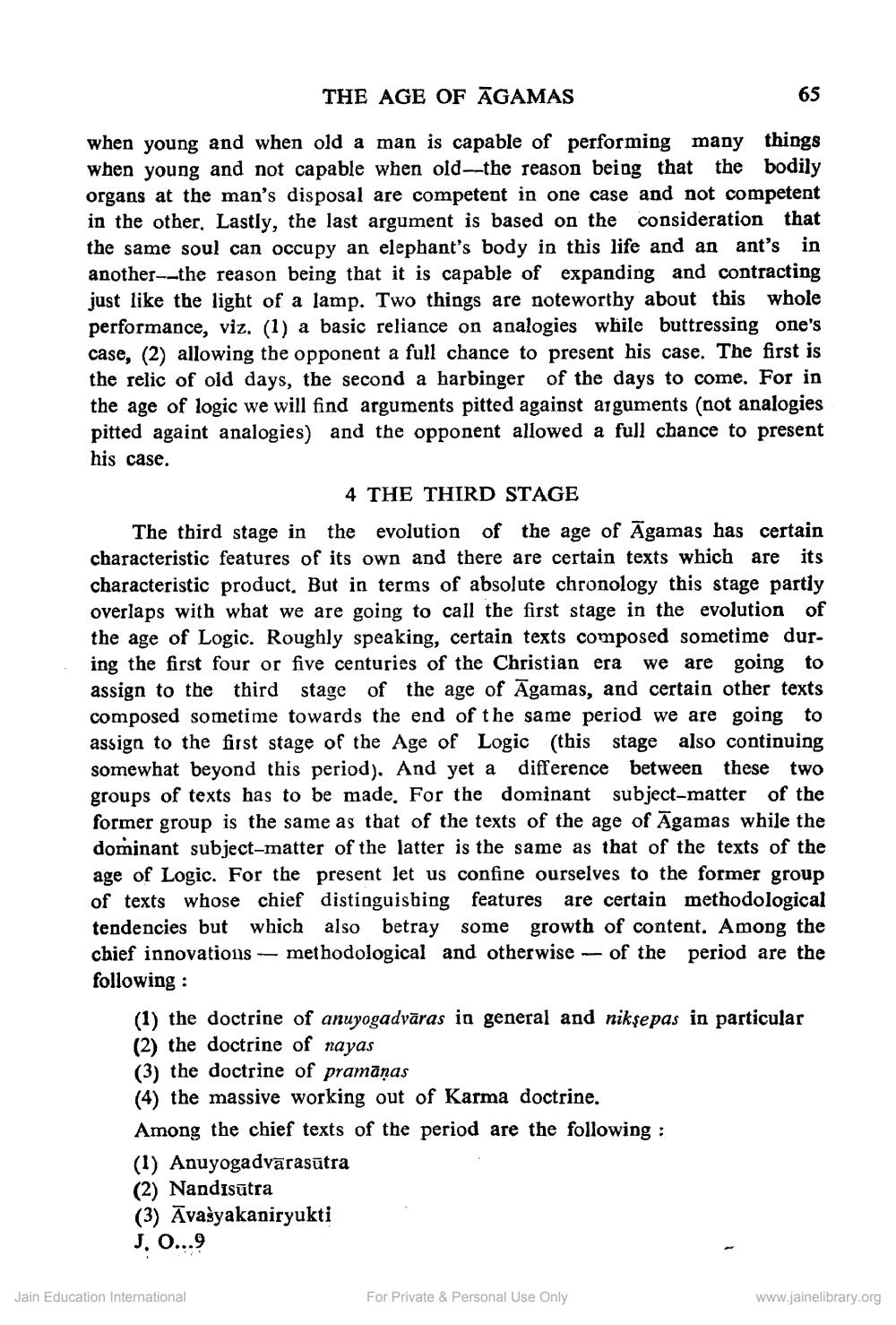________________
THE AGE OF ĀGAMAS
65
when young and when old a man is capable of performing many things when young and not capable when old--the reason being that the bodily organs at the man's disposal are competent in one case and not competent in the other, Lastly, the last argument is based on the consideration that the same soul can occupy an elephant's body in this life and an ant's in another--the reason being that it is capable of expanding and contracting just like the light of a lamp. Two things are noteworthy about this whole performance, viz. (1) a basic reliance on analogies while buttressing one's case, (2) allowing the opponent a full chance to present his case. The first is the relic of old days, the second a harbinger of the days to come. For in the age of logic we will find arguments pitted against arguments (not analogies pitted againt analogies) and the opponent allowed a full chance to present his case.
4 THE THIRD STAGE
The third stage in the evolution of the age of Āgamas has certain characteristic features of its own and there are certain texts which are its characteristic product. But in terms of absolute chronology this stage partiy overlaps with what we are going to call the first stage in the evolution of the age of Logic. Roughly speaking, certain texts composed sometime during the first four or five centuries of the Christian era we are going to assign to the third stage of the age of Āgamas, and certain other texts composed sometime towards the end of the same period we are going to assign to the first stage of the Age of Logic (this stage also continuing somewhat beyond this period). And yet a difference between these two groups of texts has to be made. For the dominant subject-matte former group is the same as that of the texts of the age of Āgamas while the dominant subject-matter of the latter is the same as that of the texts of the age of Logic. For the present let us confine ourselves to the former group of texts whose chief distinguishing features are certain methodological tendencies but which also betray some growth of content. Among the chief innovations — methodological and otherwise — of the period are the following:
(1) the doctrine of anuyogadvāras in general and niksepas in particular (2) the doctrine of nayas (3) the doctrine of pramāņas (4) the massive working out of Karma doctrine. Among the chief texts of the period are the following: (1) Anuyogadvārasutra (2) Nandisutra (3) Āvasyakaniryukti J. O...9
Jain Education International
For Private & Personal Use Only
www.jainelibrary.org




